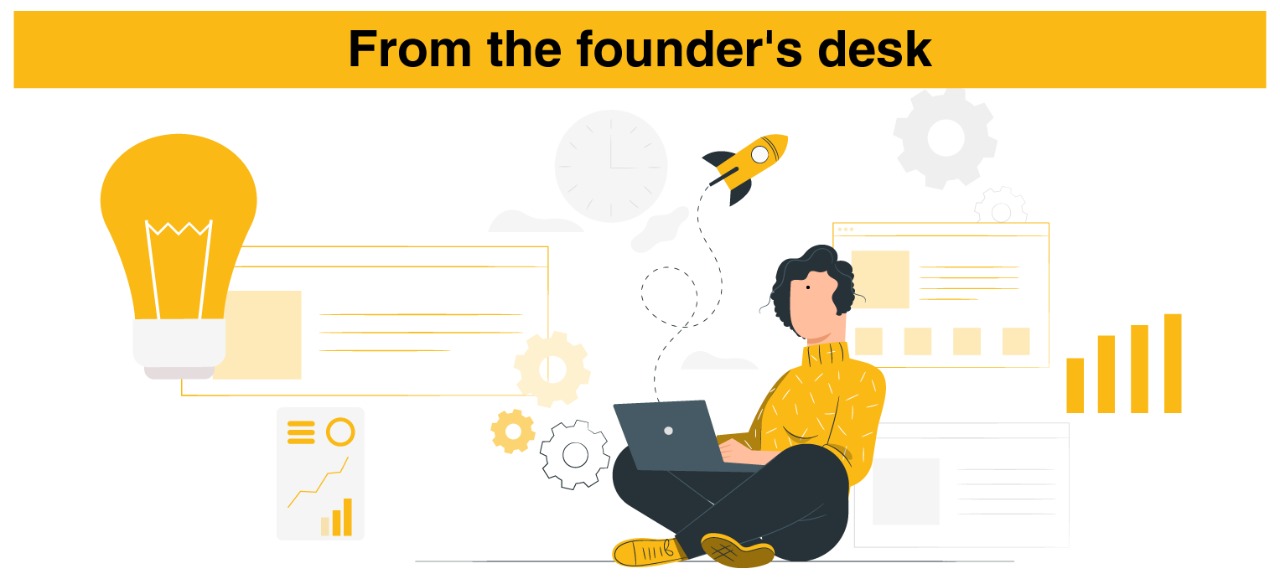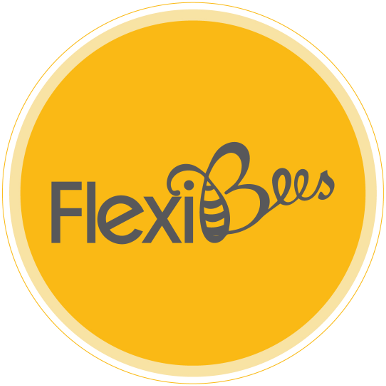
Aug 17
Founder's Desk
0 The last 10 months have been orbit shifting for us at FlexiBees. Having run a growing boot-strapped organisation for 3.5 years from our inception in 2017, when we got seed funded in Sept 2020, we thought we knew the rules of the game. We knew it would be more, more intense, more fast-paced, but essentially more of the same.
That last one turned out to be completely incorrect. Sure, in a few ways it was a simple copy-paste only over a bigger canvas, but in most ways it was not that simple.
A few things that looking back, were the biggest areas of dissonance and hence learning for us:
One example for us is our Sales organisation, about which I have written in more detail here. We did paid marketing for the first time, and it led to us realising that we needed a first responder team for these leads, for increased agility and qualification. The nature of the companies coming to us, their affiliation with us, their knowledge of us, had changed, and so they needed a different response and allocation strategy.
Hence we put in place a team of Sales Development Representatives, who started reaching out, qualifying and then passing on SQLs (Sales Qualified Leads) to the Business Development team.
The other thing we did, and that we had planned for, was to hire a Sales operations professional, with a background in Sales and Data, who could help us create a reporting and analysis backbone. This helped us fine-tune some of our assumptions over the year, and also served as a tool for me to lead a huge sales team that in the absence of data would have been difficult to do.
We started out experimenting with various paid lead channels, put decent money across different kinds of campaigns and ads, and that helped us significantly refine our advertising strategy over the course of the year. Now our CPL is a very competitive one within B2B, owing to the space we gave ourselves to learn and course-correct.
We even started out with certain assumptions on conversion percentages for these paid channels, that were based on secondary research married to our own past conversions. However the tracking and reporting I mentioned earlier revealed a different picture to us a few months in, when we realised that there is a huge variance in conversion rates between paid and unpaid channels. We quickly changed course, and that had significant consequences, in terms of marketing actions, sales targets and revenue estimates.
The point is that run-time will reveal snags and while one should always glean lessons and not let the same one re-occur, there is no way they can be eliminated. In my opinion, it’s futile and downright unproductive to even try, because in entrepreneurship the quest for perfection comes with even bigger red flags.
Do, learn. Repeat. The sharpest tool in the entrepreneurial tool-box.
Just because the organization is scaling does not mean your team has to lay their lives down in service of that goal. People will continue to lead their lives, go on vacations, get unwell, spend time with their families and have crises; they may even leave. Having some slack in the organisation and the ability to hire and train quickly helps.
A couple of quick hacks: in a dynamic growing organisation the ability to hire quickly means first and foremost identifying when to hire. For me, having a fairly clear understanding of the revenue to leads to people ratio helped identify in advance when that time was. The other thing I did was to create standardized templates for training new folks - a detailed onboarding plan, materials they could immerse themselves in, a set of low-cost leads they practiced on, and a buddy system to spread out some of the training responsibility as well as to build deeper relationships. All of these helped us survive multiple hirings, re-hirings, people going on sabbaticals and leaves, without too much additional stress.
**
Ours was a small seed round, and a step scaling. But scaling or not, building a company is always a 0 to 1 game, and every entrepreneur who has created something from thin air, dreams and determination, deserves to give themselves a pat on the back once in a while.
Easier said than done. The only pat we know is the one on our PnLs that we glance occasionally at.
And well, as we plan for next year, once again, we find ourselves thinking that NOW we are all set, surprises behind us, ratios set. Entrepreneurs tend to optimism, you see. But no matter, when Execution is done with landing a few of her finest punches to our gut, we will get up, dust ourselves off, and choose new roads that lead to the same destination, perhaps the better so for the detour.

